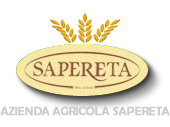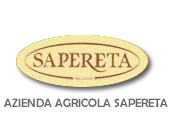Glossario del vino Sapereta all’Elba
- ACERBIC: used to indicate a young, acidic, tannic wine at times obtained from grapes not fully matured.
- ACETOUS: used to indicate wine that smells of vinegar.
- ACIDULOUS: used to indicate a slightly accentuated acidity in a wine, which is not totally unpleasant.
- AGED: used to indicate wine that has completed the right period of maturation and acquired balanced characteristics of perfume and taste.
- AGGRESSIVE: used to indicate wine with an exceptionally pronounced characteristic taste.
- ASTRINGENT: used to indicate the unpleasant characteristic a wine possesses to set teeth on edge.
- AMBER-FLECKED: used to indicate a deep almost dark yellow colour verging on browny red.
- ARC: used to indicate the formation of transparent tear-like liquid circles on the sides of the glass containing the wine. These indicate the richness of alcohol and glycerine. The arcs can be narrow, pronounced, or wide.
- AROMATIC: used to indicate a wine that underscores the odorous nature of the aroma of the grapes from which it is produced.
- AROMATIZED: used to indicate a wine to which aromatic composites have been added that come from plants or herbs and give a pleasant aroma to the product; the best known aromatised wines are called vermouths.
- ASTRINGENT: used to indicate a wine which gives the tactile sensation of contraction of the mucosa due to the excess of tannin.
- BALANCED: used to indicate a wine with the right proportion of the various ingredients, principally the right ratio between alcoholic and acidic content.
- BARREL ODOUR: characteristic of the wine acquired from the wood of the barrel. It can be delightful if moderate, negative if excessive or if the quality of the wood is not good or if it has been badly kept.
- CRISP: used to indicate a wine in which the absence of sugars is perceptible when tasted and the limited persistence of the gustatory sensations on the palate.
- CLEAN: used to indicate a wine lacking in any foreign olfactory or gustatory sensation.
- CUSHIONY: used to indicate the ensemble of gustatory sensations of a wine which derive from the well-orchestrated completion of a delightful softness with a delicate ruggedness.
- DELICATE: used to indicate a wine with light fragrances and flavours, together with a body that, if without strength, is still palatable.
- DISHARMONIC: used to indicate a wine with a poor balance between the organoleptic components due to its ingredients, some of which emerge unpalatably.
- DIRECT: used to indicate a faultless-wine.
- DEVELOPED: used to indicate a wine which has been for a long time in a bottle and has olfactory and gustatory characteristics that are little pronounced.
- DRY: used to indicate a wine practically without sugar ripeness, which is completely dry when tasted.
- ELEGANT: used to indicate a wine with fine characteristics, and a quality that is not excessively pronounced. The appearance is light and pleasant.
- EVOLVED: used to indicate a wine which is on its way towards a phase of decay (more than oxidised but not yet past).
- FULL-FLAVOURED: used to indicate a wine with a delightful richness of balanced components.
- FRUITY: used to indicate a wine with an olfactory and gustatory sensation of fresh fruit, especially apple.
- FLEETING: used to indicate a wine with a light olfactory and gustatory sensation that is fleeting and without length.
- FULL: used to indicate a wine which possesses excellent balance in its components (alcohol, acidity, body) all well represented in terms of quantity.
- FADED: used to indicate a wine which has lost its essential characteristics.
- GENEROUS: used to indicate a wine with a marked alcoholic content, but balanced by a rich full body.
- HARD: used to indicate a wine with excessive tannins, acidity and extract.
- LEESY: used to indicate a wine with unpleasant olfactory or gustatory sensations typical of lees.
- LEAN: used to indicate a wine lacking in quality, poor in body, aroma and fragrances and, in any case, lacking in balance.
- LINGERING: used to indicate the length, over time, of the gustatory-olfactory sensations of the wine after it has been expelled from the mouth. The assessment of the persistence of these sensations, more or less marked, is made with reference to split seconds.
- MELLOW: used to indicate a delightful olfactory and gustatory sensation. More generally it indicates the harmony of a wine, a delightful impression.
- MADERISED: used to indicate a dark coloured wine (Different in the white and red type), with a bitter odour of dry grass, a hard, short, bitter flavour reminiscent of hazelnuts. This complex of properties is the result of oxidisation and, if for a number of specific wines (Marsala, Madera, Jerez) it is a typical characteristic, for normal wines it is a serious fault.
- METALLIC: used to indicate a hard, dry, cold gustatory sensation reminiscent of iron and which is perceived by drinking the wine on its own or with certain foods which create an unharmonic complex (for example raw artichokes).
- OXIDISED: used to indicate a wine which, due to oxidisation, is altered in colour (darker than normal) lacking in freshness, verging on the maderised.
- PLUSH: used to indicate a wine with delightful, round, velvety, delightfully fluent characteristics.
- PAST: used to indicate a wine in its full phase of decay.
- ROUNDED: used to indicate a plush wine, with pleasant acidity and well-orchestrated (sensation of whirling in the mouth with delightful ease).
- SWEETISH: used to indicate a wine with a slightly sweet, off dry taste, together with light tannicity.
- STRINGY: used to indicate an unpleasant, rather complex taste, connected with excessive acidity, taste recalls unripe fruits and lemon.
- SHORT: used to indicate the low olfactory or gustatory-olfactory intensity of a wine.
- SWEET: used to indicate a wine with a large quantity of sugar.
- STRONG: used to indicate an alcohol-rich wine.
- SNAPPY: used to indicate a wine with a delightful acidic sensation.
- SAVOURY: used to indicate a wine delightfully rich in saline components together with a perky acidity.
- SHALLOW: used to indicate a wine without character, poor in any olfactory characteristic, flavour and body.
- TANGY: used to indicate a gustatory sensation which is perceived when the special nervous receptors located at the base of the tongue are excited.
- TART: used to indicate a wine with a high level of alcohol, high tannicity, and equally high acidity to the extent of leaving an impression of a rough and hard sensation on the palate. Characteristic of the young period of great wines served with roast meats.
- TANNIC-HEAVY: used to indicate a wine rich in tannin that is found especially in young, full-bodied wines.
- UNCTUOUS: used to indicate a glycerine-rich wine which presents a gustatory sensation with an accentuated viscosity that recalls grease.
- UNRIPE: used to indicate a wine which is still to reach full maturity.
- VINEYARD ECOSYSTEM: (literally from French word territory). In addition to territory, this term also indicates the environment, the infinite interactions of humans who live it, the soil, the exposure, the climate and microclimate. A balance of forces and energies that characterise a set place, and therefore unique.
- WARM: used to indicate a rather alcoholic wine, which gives the palate a delightful tactile sensation of warmth.
- WEAK: used to indicate a wine with little body, without alcohol.
- WHOLEMEAL: used to indicate a wine with sensations that recall leavened bread. These sensations are due to fermentation or refermentation processes terminated a short time before.
- YEASTY: used to indicate a wine with a sensation that recalls leavened bread, due to fermentation or refermentation processes that have terminated a short time before.

